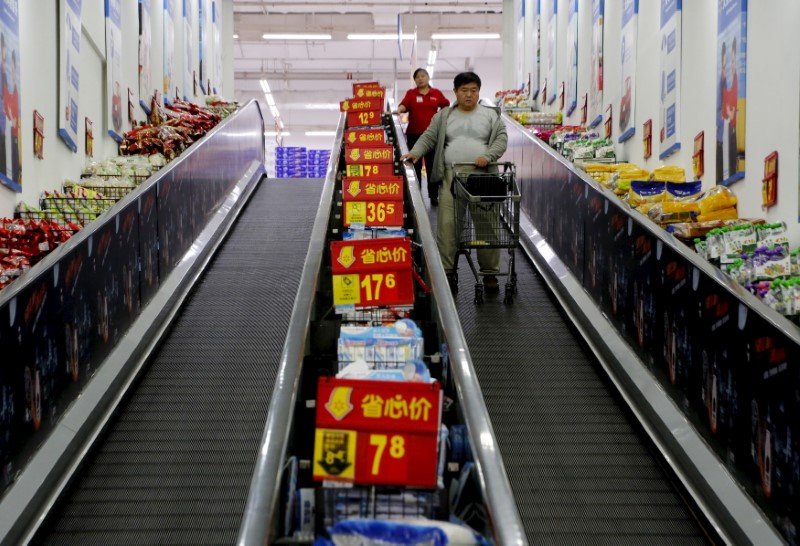(Bloomberg) -- China’s manufacturing sector continued to expand in December, providing some relief to Beijing as the world’s second-largest economy continues to struggle with a property market slump.
The official manufacturing purchasing managers’ index rose to 50.3, beating the median estimate of 50, the National Bureau of Statistics said Friday. The non-manufacturing gauge, which measures activity in the construction and services sectors, increased to 52.7, above the consensus forecast. The 50-mark separates expansion from contraction in conditions.
China’s economy is facing rising pressure on multiple fronts, with policy makers announcing a shift in focus to stabilizing growth next year with “proactive” policies. However, the housing market is still struggling, local government finances are being hit by weak land sales and there has been a series of recent Covid-19 outbreaks, including one which caused authorities to lockdown the city of Xi’an.
Friday’s data showed China’s economy maintained its recovery trend, Zhao Qinghe, senior statistician at the NBS, said in a statement. The manufacturing PMI climbed for a second straight month as some commodities prices fell significantly and cost pressures of companies eased to some extent, he said.
However, insufficient demand remains a main problem for manufacturers. More than 39% of the surveyed companies said they face such issues, indicating “the problem of shrinking demand is still prominent,” Zhang Liqun, a researcher with the State Council’s Development Research Center, said in a statement released by the China Federation of Logistics and Purchasing.
New orders remained subdued and new export orders worsened, highlighting the pressure China faces to stabilize trade next year. Construction activity cooled, with the sub-index falling to 56.3 due to cold weather and the approach of holidays, Zhao said.
The property downturn continues to dampen sentiment and slow down construction activities, and government pressure on local governments to borrow and spend isn’t yet having much effect in boosting investment and construction.
A set of earliest available indicators tracked by Bloomberg suggested that while the economy remained stable overall, the slumping property sector and slowing external demand are clouding the outlook.
Other key highlights from the PMI data:
- Sub-index for manufacturing jobs rose to 49.1; non-manufacturing employment increased to 47.6
- Price pressures on manufacturers eased in the month with input and output prices falling
- The sub-indexes tracking large and medium manufacturers picked up, while the sub-index for small enterprises fell
(Updates with details and comment from 5th paragraph.)
©2021 Bloomberg L.P.
